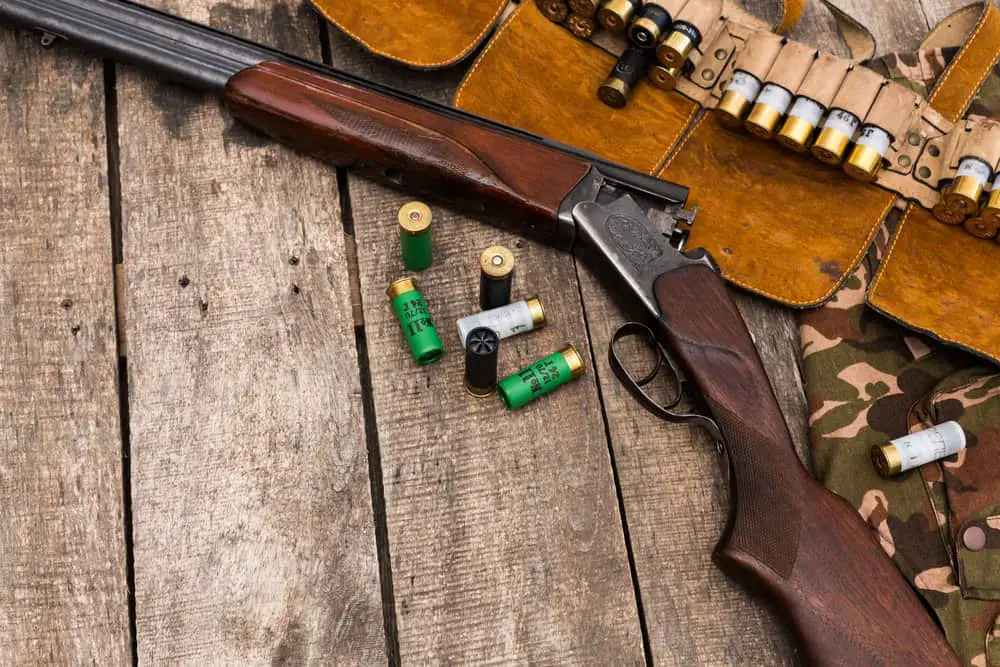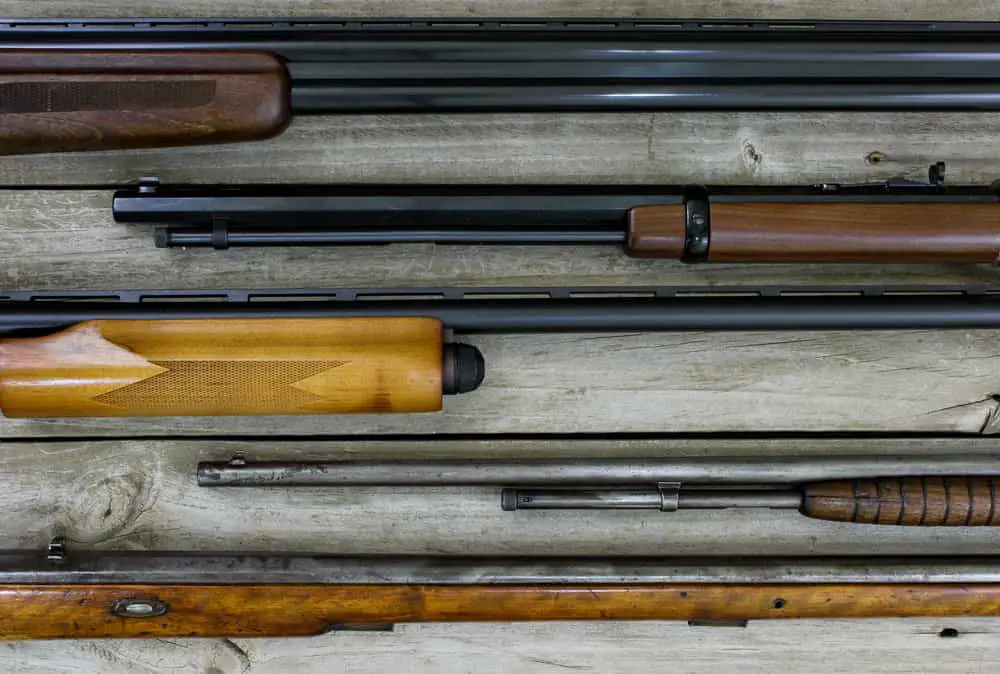How should firearms be transported in a boat? First and foremost, the guns should be unloaded and remain in the same place during the trip. Once you understand that, you’re already ahead of the game.
In my experience, I’ve learned that it’s better to arrange for separate transport of guns whenever possible. However, I understand that this isn’t always feasible. Many of you will prefer to keep the weapons with you. In fact, it may even be essential to the success of your trip.
If you find yourself in charge of a boat that has guns on board, you’ll need to know the correct way to move them. That’s why we’ve put together this guide.
When you’ve finished reading, you’ll have a clear and comprehensive picture of how firearms should be transported on a boat. In addition to covering all the legal aspects of the transport, we’ll fill you in on the practical measures.
For your convenience, we’ve also included advice on how to arrange for separate shipment of the guns, just in case that’s an option.
Legal Matters

Is transporting firearms on a watercraft legal? The answer is yes—at least on a federal level. As long as the gun is carried by a licensed individual who’s legally permitted to operate the boat, the practice falls well within the prescribed limits of the law.
In essence, the laws pertaining to carrying weapons in boats are similar to the ones that refer to carrying the same weapons on land. You’ll need to have a legitimate reason for carrying the firearms.
Your reasons could be as simple as self-defense or hunting. Be aware that in some areas, you’ll need permission to hunt when you reach your destination as well.
As per the Firearm Owners Protection Act (FOPA) of 1986, anyone who has the legal right to own and operate a firearm in states where such a thing is permitted also has the legal right to move the gun to another location, assuming that possessing and carrying the weapon is also lawful in the other location.
That means that if you’re legally permitted to carry guns in Maine, you can take them across state lines to New Hampshire, where open carry is also legal.
Whether the weapons are transported by land or by water, they should be unloaded and dissembled before you take them across state lines. We’ll provide further details, as well as instructions, in the section below.
Finally, note that if you’re traveling into international waters or across the borders of another country, other laws and regulations may apply. Make sure you know what’s legal and what isn’t before you attempt to make this sort of crossing with weapons on board your craft.
This isn’t likely to be an issue for most recreational boaters. However, it’s important to stay abreast of the laws, especially when it comes to weapons.
The bottom line? Check all state, county, and municipal laws before transporting a firearm on your recreational watercraft. If you’re traveling internationally, look into the laws for whatever countries you’ll be visiting as well.
Alternate Arrangements
If you can arrange for your firearms to be transported to your destination by land, we would suggest that you take this option instead. It’s more common for guns to be transported in cars and trucks, and it will lead to fewer questions if you happen to be detained by law enforcement.
However, we recognize that this isn’t always an option. That’s one of the reasons why we’ve included a step-by-step primer on how to transport a firearm on board a vessel below.
How To Transport Firearms On A Boat
The Purposes Of Safe Storage
Before we get into the details of safe transport for weapons, let’s break down your specific goals.
It’s important to follow the steps we’ve outlined for safety reasons, but it’s just as critical to understand the reasoning behind them. When transporting weapons on board a watercraft, there are three main purposes to be aware of:
- To prevent the weapon from causing an accident while it’s on board the vessel.
- To prevent any passenger but you from having access to the weapon.
- To ensure that the weapon remains in prime working order in case you need to use it at any point.
In addition to unloading and dissembling the weapon, proper placement and storage are crucial when it comes to achieving these goals.
Transporting A Single Firearm
Your first step is to make sure that the weapon is empty. If the gun is not loaded, there’s no chance it will accidentally discharge during transport.
Next, secure the weapon. If you have a safe on board, this is the perfect opportunity to use it. In any case, it’s best to disassemble the gun.
Use a TSA-approved case for storage if possible. In addition to being the most secure option available, most are watertight, which makes them ideal for boat transport.
Keep ammunition in a separate locked container. Make sure all cases are stowed in a secure area of the vessel.
If you don’t have a container for the weapon, ensure that the muzzle is pointing outside the vessel, away from any passengers. In addition, keep the gun in the front section of the craft so that it’s kept far away from anyone on board.
As you pilot the craft, the handle or butt of the weapon should be facing you. Never store a gun with the barrel pointed toward you or other passengers, even if it isn’t loaded or assembled at the time.
As the driver, you’re the only person who should be within range of the weapon. When you’re satisfied that it poses no threat to you or anyone else on board, you’re free to pilot the vessel as necessary.
Transporting More Than One Firearm

Depending on the type of expedition you have planned and the number of hunters included, there may come a time when you’ll be piloting a boat with more than one firearm on board.
The rules for transporting multiple firearms are similar to those for moving a single weapon. All guns should be emptied of ammunition and dissembled, if possible.
Place the first gun in the front section of the boat, making sure the barrel is facing outward. A reliable passenger—either the driver or another trustworthy individual—should then be positioned just behind the weapon.
Set the other gun in the rear of the craft, again with the barrel facing away from the passengers. The passenger that sits nearest this weapon needs to ensure that the handle is facing him or her at all times, and that the muzzle is pointed in the opposite direction.
Other Safety Tips
—Never go beyond the boat’s weight capacity, especially when transporting weapons. This will make it easier to avoid accidents.
—Follow all the legal requirements of your state and municipality. Always keep your licensing information handy in case it’s requested by law enforcement.
—If you’re bringing a dog along on your trip, he or she should be properly trained and able to handle distractions without getting overexcited. During the journey, keep the dog in the center of the vessel, preferably resting on the floor.
—Make sure that any children are aware that there are weapons on board, and that they aren’t toys. Even when guns aren’t loaded, children who are going to be around them need to be educated in proper weapon safety procedures—and the sooner the better.
—Keep a close eye on the weather and stay as close to land as possible. If the forecast is poor, consider rescheduling the trip for another day. In fact, this is good advice whether you’re carrying guns on board the watercraft or not.
—If you load and fire the weapon while still on board the vessel, wait until the craft is safely anchored and the motor is turned off. If the watercraft is still moving when you discharge the weapon, you run the risk of hitting something or someone other than your target.
In Conclusion
There’s nothing wrong with taking a firearm along on a fishing and hunting expedition as long as you know what you’re doing.
If transporting the guns by car isn’t an option—or if you want to hunt from the watercraft itself—you can keep them with you on board. Just make sure to clear and dissemble the weapons beforehand and keep them pointed away from the passengers at all times.
Project “Safe Transporting” Boating
Check out our article on: What Is The Best Way To Avoid Overloading Your Boat?
